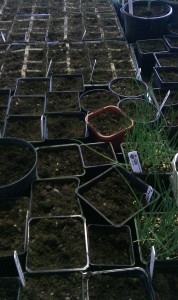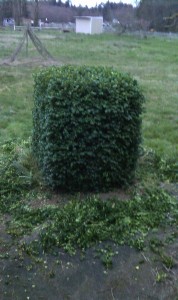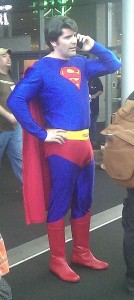The one hesitation I had when I originally pondered a rural life was whether I would feel isolated so far out in the country. Well, I needn’t have been concerned. This is the most hopping place…
(Yes, that’s an Easter pun.)
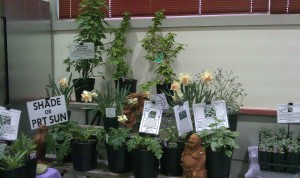 Starting in April, there is at least one festival per weekend, and, usually several. Rural folk intentionally gather and celebrate all aspects of country life and they do it with such glee.
Starting in April, there is at least one festival per weekend, and, usually several. Rural folk intentionally gather and celebrate all aspects of country life and they do it with such glee.
This weekend, we attended the Garden Faire and then traveled to the Fidalgo Island Quilters show. Yes, that’s a bit much for one day, but we soldiered through.
The Garden Faire is the summer’s introduction to the local gardening organizations and suppliers. Wild Song, the organic nursery across the street, sponsors this event. It’s so fun hanging out with all our friends there. The Harvest Jubilee, our autumn farm festival, was represented, (more on that in a later post), as was the Master Gardener’s group. The National Wildlife Federation had experts talking about their Wildlife Habitat program, which helps people create havens for wild animals within their own yards. They’ll be having garden tours later this year on Camano Island.
Of course, there were lots of local vendors, with some amazing, hand-crafted products: African baskets made on-site, painted glass, fudge (yum), metal garden art, music, plants, BBQ, jewelry, and, of course, espresso.
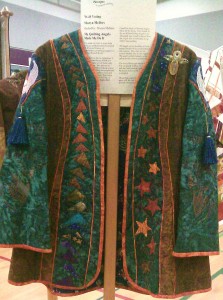 Sufficiently tanked up on coffee, I drove our little group to Anacortes and we spent the afternoon staring at textile art. In one of my earlier posts, I talked about the integration of diverse cultures into the art of quilting. This show highlighted that integration and then added a few new techniques. Many of the quilts took their inspirations from photography, using embroidery and appliqué to show depth and texture.
Sufficiently tanked up on coffee, I drove our little group to Anacortes and we spent the afternoon staring at textile art. In one of my earlier posts, I talked about the integration of diverse cultures into the art of quilting. This show highlighted that integration and then added a few new techniques. Many of the quilts took their inspirations from photography, using embroidery and appliqué to show depth and texture.
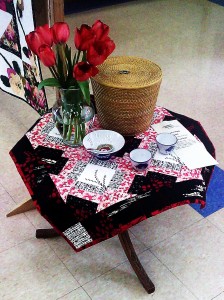 So, if you make a quilt, especially if it’s a small one, what do you do with it? (Hey, they can’t all be king-sized masterpieces. That would be a lot of yardage to quilt and it would make my arms tired.) Well, you can hang it on a wall, you can use it on a table, (see?), or you can use it as a throw. You can quilt a vest, a jacket, or a vestry garment.
So, if you make a quilt, especially if it’s a small one, what do you do with it? (Hey, they can’t all be king-sized masterpieces. That would be a lot of yardage to quilt and it would make my arms tired.) Well, you can hang it on a wall, you can use it on a table, (see?), or you can use it as a throw. You can quilt a vest, a jacket, or a vestry garment.
In fact, the techniques used in quilting often translate into other areas of endeavor. It is, after all, a practice in spatial ability, which teaches the ideals of perspective, the basics of design, and how to work with color. The very best quilts engage you while keeping you warm.
Lest we forget, the big Tulip Festival is going on all this month is the lovely Skagit Valley. Good scenery, good food, and, maybe, thousands of migratory birds for entertainment. Sounds like fun to me.

